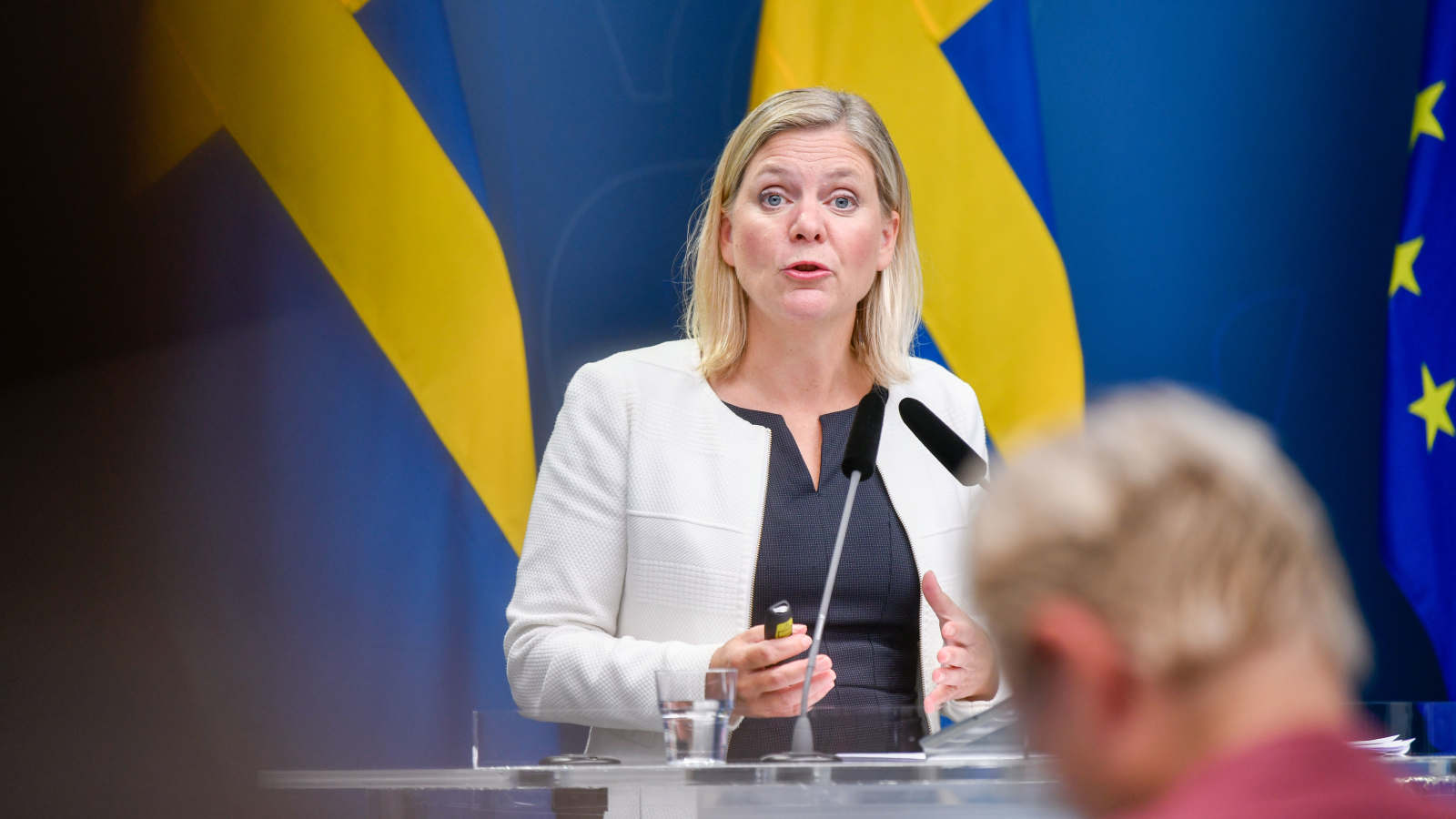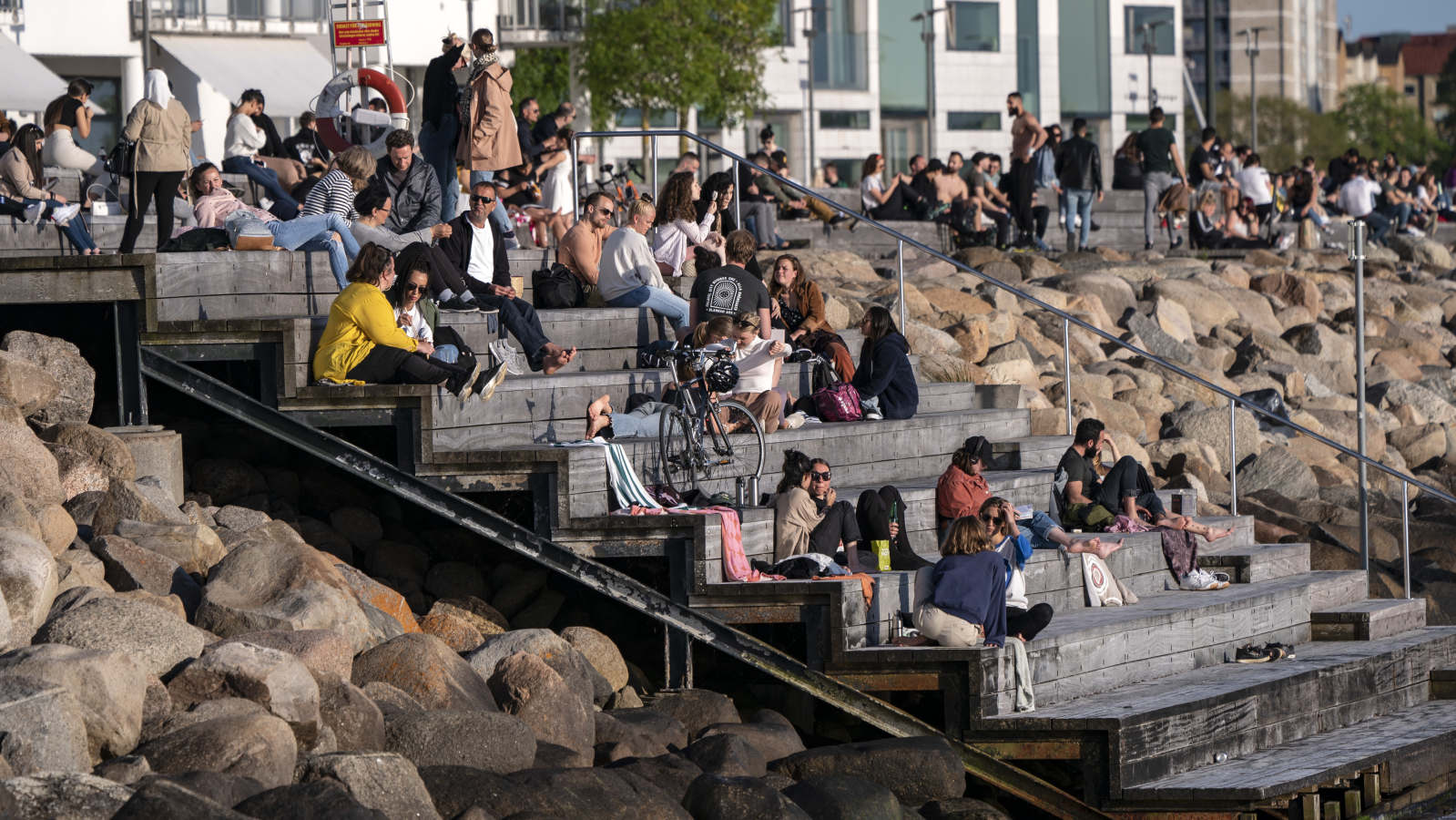Pandemic rebel Sweden plots its economic recovery
by Russell LynchIn the minds of many motorists, the Volvo is synonymous with reliability, but even Sweden's totemic national marque briefly succumbed to COVID-19 in the spring.
Almost 280,000 cars rolled off the production line of its vast Torslanda plant near Gothenburg last year before the pandemic struck, forcing the company to send home 6000 workers in the first unplanned stoppage in the 56-year history of the factory.

No longer though. While Britain and other countries were languishing in lockdowns, workers were back on shift by the end of April after 15 days off. Now the plant is churning out virtually a car a minute, and, according to the country's biggest company, production is now "roughly the same" as before the outbreak.
The revived fortunes of the emblematic brand are reflected across Sweden's wider manufacturing sector, which has grown for two months running and in August expanded at its fastest pace since November 2018.
While growth has picked up, its COVID-19 infection rate has also plummeted as cases rise elsewhere in Europe, adding fuel to the debate over drastic economic shutdowns.
European Centre for Disease Prevention and Control figures show Sweden with a lower infection rate than Nordic neighbours who imposed tougher restrictions, which Johan Carlson, the head of its public health agency, claimed as a vindication of a "consistent and sustainable" strategy.
All through the crisis, schools stayed open, while Swedes could visit cafes and restaurants, go shopping or hit the gym even as the death toll rose. Volvos may not be at the racy end of the motoring spectrum, but the controversy over its light-touch lockdown - masterminded by state epidemiologist Anders Tegnell - was anything but boring. Around half of the nation's 5838 deaths so far, for example, have been in care homes, which were locked down belatedly at the end of March.
So can Sweden's falling infections and lesser economic blow be taken as a victory for its light-touch approach? According to economists, the answer is more nuanced, and it depends on comparisons. The country's 8.1 per cent decline in GDP during the first half of 2020 looks good against the eurozone - which fell more than 15 per cent - but not so much against its Nordic rivals who had tougher lockdowns. Denmark, for example, saw an 8.8 per cent decline, while Norway's was similar, at 8.3 per cent. Finland, whose economy "only" fell 6.3 per cent, actually comes out ahead of Sweden despite a higher score on Oxford University's stringency index, which measures the severity of lockdowns out of 100. Finland averaged 33.3, compared to Sweden's 25 over the first half.
Sweden has also seen more than six times as many deaths per million as Denmark, underlining the stark human costs of the policy.
By these yardsticks, the case is hardly conclusive. Tomas Dvorak, an economist with Oxford Economics, says: "The overarching picture is that I'm not sure whether the 'no-lockdown light touch' policy has been that beneficial economically."
Sweden's less dense population and the highest share of single-person households in Europe make it less likely to succumb to infections. But the characteristics of its economy are also more pandemic-proof than many European peers. Swedish consumption fell sharply between March and May, but the economy is less reliant on services and tourism than badly hit economies like Britain and Spain. As a major exporter, trade accounts for 90 per cent of its GDP. Three quarters of its exports are sent to the eurozone, with Germany alone accounting for 11 per cent of total overseas sales.
"The overarching picture is that I'm not sure whether the 'no-lockdown light touch' policy has been that beneficial economically."Oxford Economics economist Tomas Dvorak
But while the domestic hit was smaller, the emphasis on exports leave it exposed to a resurgent virus overseas, if demand in major markets sinks. Those big manufacturers like Volvo and truck maker Scania, or Skanska - the world's fifth biggest building firm - also have extensive supply chains vulnerable to COVID-19 disruption. David Oxley, European economist at Capital Economics, warns: "I wouldn't say Sweden is out of the woods. Domestically the economy has done pretty well. By any normal standards it has seen an eye-watering decline but in a comparative sense it has got off lightly. Activity is picking up.
"But Sweden is more open and oriented to exports than many. Being such an open economy, they are more reliant on what policymakers elsewhere do. That will be a great headwind for growth over the coming years if growth in major European export markets start to slow. Sweden won't be immune from any of that."
Also unhelpful to the export cause is an appreciating Swedish krona, which has recovered all of the ground in the early stages of the crisis when traders were spooked by high death rates and a laissez-faire lockdown. Alongside these headaches overseas, Sweden has its own internal pre-COVID challenges. Household debt is high, and like much of Western Europe, its population is ageing, putting up welfare bills.

Sweden also has issues with high unemployment, which has jumped above 9 per cent despite government support schemes to ease the pandemic. Even before the outbreak, the nation was struggling to absorb the record 162,000 asylum seekers it took from Syria and elsewhere in 2015.
The difficulty integrating the newcomers, which pushed the population above 10 million for the first time in 2017, fuelled the rise of the populist Swedish Democrats in 2018 elections and left Social Democrat prime minister Stefan Lofven at the head of a fragile coalition.
But the one major advantage the Swedes do have compared to many other nations is massive fiscal firepower, built up after years of balanced budgets since a banking crisis in 1992. That gave it the leeway to fire off an initial SEK300 billion ($46.9 billion) in aid such as deferred tax for companies as part of a stimulus worth 17 per cent of GDP, while Sweden's central bank, the Riksbank, also made SEK500 billion in loans available to companies. The Riksbank also launched SEK300 billion in quantitative easing and caught markets by surprise in the summer by extending the programme into the middle of next year with a further SEK200 billion, although it is yet to take interest rates back into negative territory.
Next week Magdalena Andersson, Sweden's finance minister, is set to add further ballast when she presents her 2021 budget on September 21.
Robert Bergqvist, a former Riksbank senior official and now the chief economist of Swedish bank SEB, expects stimulus measures worth a further 2 per cent of GDP as "aggressive" fiscal policy takes the strain again.
He says: "We are going to have tax cuts for low and middle-income earners - that is good as a kick-start. I also expect the government to spend more money on municipalities who will use the money immediately, so you will have a swift response. Hopefully we are also going to see more infrastructure investment, as we would like to see more green investment."
Even after all that, Sweden's deficit is unlikely to rise past 45 per cent of GDP and he reckons "there is lots of ammunition to support growth".
The approach contrasts with the recent speculation over tax rises in Britain, which Bergqvist believes would be a "big mistake". He warns: "Right now you want to stimulate the economy. If you start talking about it [tax rises] then the private sector will not spend the money."
SEB forecasts Sweden's growth will bounce back by 4.2 per cent next year and expand a further 3.1 per cent in 2022. But even as the country claims a COVID-19 victory, the global fight against a resurgent virus is entering a dangerous new phase. That could leave some potholes ahead in the Volvo economy's road to recovery.
Telegraph, London